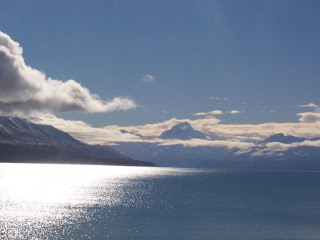
By constant, I mean part of daily discussions, and of course that constant climate change has occurred for millions of years. Today is Climate Change blog action day. So we are going to explore the concept (just a little) and spend more time looking at how you and your kids can learn more on your own about this topic. I spent some time this week taking small breaks from moving houses on camp catching up on the news both local and national. Everyday, at least 3 times, I heard the terms Global Warming and Climate Change. The most I heard the terms was 11 in one day. Usually these terms were mentioned in stories that were not the most positive in nature. Now, to be fair, there are also some media outlets that do report on positive environmental stories. See below for some media options.
Many people I talk to about Climate Change, the term I prefer over Global Warming, have a general feeling of being overwhelmed or powerless when they really start thinking about Climate Change and what they can do to help. It is a large-scale issue, global in fact.
It can be confusing with all the media hype out there on Climate Change. The majority of scientific data available, point towards Climate Change being a reality. There are some sites and media outlets out there that say that Climate Change is all a political smear job. Regardless of where you lie on that spectrum, I will bet that your children have heard about Climate Change and may have some questions. Climate Change is a great topic to explore together, and decide how your family, or group, want to address this environmental topic.
So what are some things you can do together? The first is to get some information. And there is no shortage of info out there! Make sure that the information is age appropriate. Please do not overload your young children, 5th grade and under, with gloom and doom data. Studies have found that children who are bombarded with constant messages of environmental destruction when they are young, under 5th grade, show a greater level of feeling helpless with regards to what they can do to help the environment. Children need to connect to nature at a young age in order to develop a life-long concern for the environment.
If you have young children, perhaps have a general talk about climate verses weather. Climate is the long-term view of local weather. Talk about your areas climate and weather and build up their vocabulary. Having tools to talk about environmental topics is critical for informed discussions.
If you have older kids, perhaps ask them the following question, “What do you think about Climate Change?” Then listen. Find out what your kids are hearing or what they have explored. Then decide together what you want to explore. Below are some websites that you can use as a springboard for your exploration into Climate Change. If you have questions, or want more resources or research, please contact me!
Nature Nugget:
Here are a few definitions for you to use in this discussion:
Climate: The weather patterns in a particular region, generalized over a long period.
Climate Change: An alteration of area or worldwide long-term weather patterns.
Global Warming: The predicted excessive warming of the atmosphere resulting from the accumulation of atmospheric gases such as Carbon Dioxide, Methane, Nitrous Oxide, and Chlorofluorocarbons.
Websites:
Intergovernmental Panel on Climate Change: http://www.ipcc.ch/
World Meterological Organization:
http://www.wmo.int/pages/prog/wcp/wcdmp/wcdmp_home_en.html
United Nations Environment Programme: http://www.unep.org/climatechange/
The Nature Conservancy:
http://www.nature.org/initiatives/climatechange/activities/art19630.html
Fun video! http://www.globalcommunity.org/flash/wombat.shtml
Green Living Ideas: http://greenlivingideas.com/category/podcasts
Green Talk Radio: http://personallifemedia.com/podcasts/234-greentalk-radio
